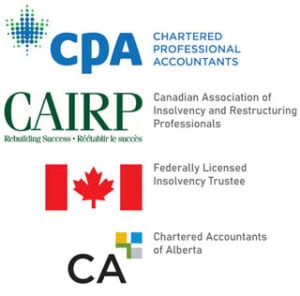When you file is a Consumer Proposal, your Trustee or Proposal Administrator sends notice of your Consumer Proposal to each of your creditors, providing them with a copy of your Consumer Proposal, a Proof of Claim form to document how much is owed to them, and a voting letter that they return to the Trustee, indicating that they either reject or accept your Consumer Proposal.
In order for a Consumer Proposal to be accepted and move forward, the Consumer Proposal must be approved by a majority of the creditors who participate in the vote, voting in favour of your Consumer Proposal.
Some creditors choose not to respond or participate, and are not included in the vote count.
HOW LONG DOES IT TAKE TO FIND OUT?
The Act provides your creditors with 45 calendar days from the date of the filing of the Consumer Proposal to submit their votes. For example, if you filed your Consumer Proposal on October 1, your creditors would have until November 14, to get their votes in and have them count.
HOW ARE THE VOTES DETERMINED AND COUNTED?
In order to be approved, your Consumer Proposal requires the creditors casting votes to vote in favour of your Consumer Proposal. Creditors are provided with one vote for each dollar they are owed, and a simple majority of the votes is required for acceptance. The creditor with the most votes has the most influence over the outcome of the vote. In order for a creditor’s vote to count, they must file a valid Proof of Claim with the Proposal Administrator or Trustee prior to the 45 day deadline. Creditors who do not submit a claim prior to the deadline are not considered in the vote, and are excluded from the tally.
In other words, you only need the participating creditors to cast a majority of the votes in favour of your Consumer Proposal. In order to illustrate how a typical vote works, we provide the
following example:
Let’s say you owe $35,000 in total, and have six creditors, but let’s say only 4 of those creditors submit votes, totaling $25,000.
In order for your Consumer Proposal to be accepted, you only need creditors holding claims totaling $12,501 or more to vote in favour of your Consumer Proposal. In other words, only 50% plus 1 of the $25,000, NOT 50% plus 1 of the total $35,000 you owe. In this scenario, if one creditor holds more than 12,500 votes, and that creditor votes in favour of your Proposal, it is accepted even if the other three, having less than 12,500 votes, vote against it.
WHAT HAPPENS IF NO CREDITORS VOTE?
In drafting the Act, the government recognized that some of your creditors will not participate. If the level of participation is so low that no creditors actually submit votes, the government considers that your creditors are indifferent and deems your Consumer Proposal accepted.
It may seem strange that creditors do not participate, but when asked why, they often say that they didn’t care one way or the other, and would let the other creditors decide. If everyone does that, and no votes are received, the deeming provision applies, and the Proposal is accepted.
CREDITORS CAN REQUEST A MEETING AND EXTEND THE VOTING PERIOD
Creditors holding claims exceeding 25% or more of your total debt can vote against a Consumer Proposal and request a meeting of creditors. The Trustee, upon receiving such a request, must schedule a meeting within 21 days, and you are required to attend the meeting in order to respond to any questions or concerns your creditors may have.
A request for a creditors’ meeting extends the timeframe for submitting creditors’ votes from 45 days to the date of the creditors meeting. If a request for a meeting comes in on the very last or 45th day, the voting period could potentially be extended from 45 days to 66 days, or just over two months (45 + 21 = 66). Any creditor can submit a vote until the end of that timeframe, and if
they so choose, they can change their vote during that time frame as they see fit.
It is our experience that creditors requesting a meeting are usually looking for a debtor to amend their Consumer Proposal, by increasing the payments they have offered to make. It is critical that you be available at that meeting in order to consider any amendments, because if an amendment to your Proposal is tabled by a creditor in order to secure their vote, and you are not there, the negative vote will count and your Consumer Proposal will be rejected.
It is rare to have a creditor change a positive vote to a negative, but it is quite common for a creditor to change a negative vote into a positive vote either because an amendment is offered by a debtor, or the creditor receives more information and changes their mind.
LIMITATIONS
A Trustee cannot contact creditors and solicit or request positive votes in favour of your Consumer Proposal, and any creditors who are related to you can vote against or abstain from a vote, but may not vote in favour of your Consumer Proposal. This eliminates any vote tampering or undue influence on the vote by family or people related to you. There is, however, no such exclusion for friends or others known to you who are not related to you.
ALL CREDITORS ARE BOUND BY THE RESULTS OF THE VOTE
Once the votes are counted and your Consumer Proposal is accepted, all your unsecured creditors are bound by the terms of your proposal, regardless as to whether they participated or not, or even if they voted against the Proposal.
For a free, no obligation consultation and an assessment as to whether a Consumer Proposal is right for you, please do not hesitate to contact one of our Trustees near you.



